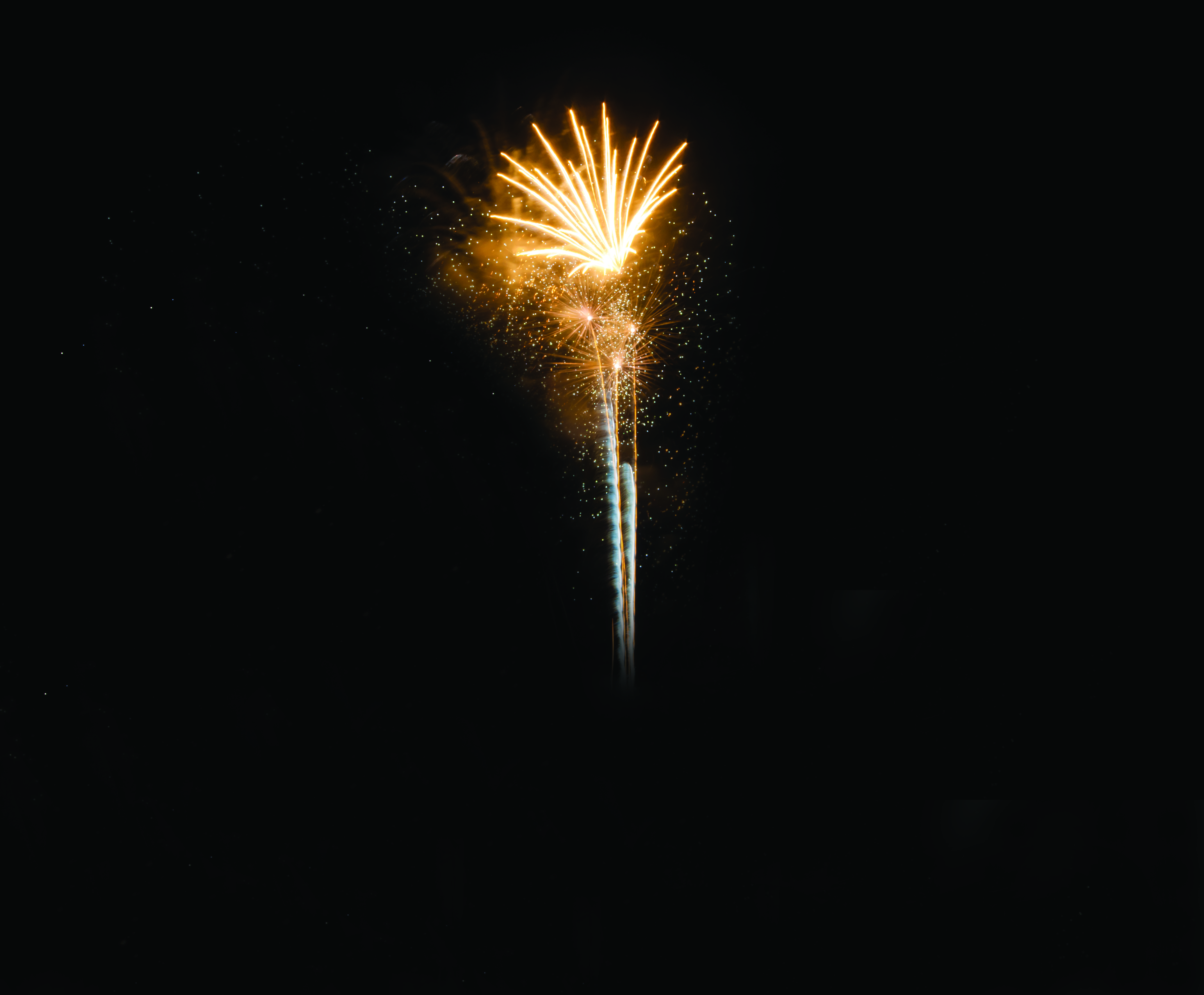
Fireworks are highly flammable devices that are designed to burn or explode, resulting in light, noise, and smoke for signalling or entertainment. Fireworks and the art of creating them are also called pyrotechnics. The first fireworks are believed to have been invented in China about 1,000 years ago. The Chinese discovered that when potassium nitrate (also known as saltpeter) was mixed with charcoal and sulphur, it became highly explosive. This black powder is also known as gunpowder and its discovery led to the invention of new weapons, rockets and fireworks.
Stars
Stars are small pellets or balls made of tightly packed chemicals that burn with bright colours when lit. Stars are responsible for the colours and sparks of aerial shell fireworks. It is the chemical composition of a star that makes the colour of fireworks. The size and shape of stars play another role in how the firework will appear when lit.
Chemicals
Some of the chemicals used to achieve firework colours:
White — Magnesium, aluminium or titanium
Yellow — Sodium salts; Red — Strontium nitrate
Green — Barium nitrate or chlorate
Blue — Copper compounds
Orange/amber — Carbon/iron compounds
Safety first
Fireworks are made with gunpowder, so they are potentially very dangerous. In many places it is illegal for individuals to buy or use fireworks.
• Never play with fireworks. They are explosives and can hurt you.
• Only adults should light or hold fireworks.
• When you are watching fireworks, stand well back.
• Never go near a lit firework.
• If you are given a sparkler, wear gloves and hold it at arm’s length.
• When your sparkler goes out, don’t touch it. It could still burn you. Put the hot end down in a bucket of water or sand.
• Never give sparklers to a child under five years.
Types of fireworks
Sparklers: Sparklers are made by coating a piece of metal with a mixture of chemicals. When lit, sparklers give off sparks. The chemicals used in sparklers burn at about 1,650°F. Because they burn so hot, it is very important to use them safely and with the supervision of a responsible adult.
Firecrackers: Smoke bombs, firecrackers and flash crackers have been around for hundreds of years. Black powder or flash powder is tightly packed and sealed inside a paper tube with a fuse. When lit, burning black powder blows the container apart with a loud noise. Pinwheels are rockets attached to a frame so that instead of flying off, they spin around. Smoke bombs are constructed much like firecrackers are, but they give off a cloud of smoke instead of exploding with a big bang.
Roman candles: Roman candles are long tubes designed to shoot balls of fire and stars into the air. The tube or casing is filled with layers of stars and powder. When the powder explodes, it ignites the stars, which are propelled from the tube or casing. The process is repeated for each layer of powder and stars.
Rockets: Rockets use a fast-burning propellant charge for the launch. Lighting the fuse ignites the gunpowder, which creates an expanding gas that is forced through a choke or nozzle. The escaping gas propels the rocket into the air. While the rocket is in the air, the stars explode.
Shells: Most professional aerial firework displays use shells fired from mortars. The shells are filled with stars and gunpowder in a heavy paper (or papier mâché) casing and launched from a rack of mortars. When lit, the gunpowder charge in the bottom of the shell explodes, forcing the shell up into the sky. A slow-burning fuse inside the shell is timed so that the shell explodes at peak flight.
Shells can be up to two feet or more in diameter and carry thousands of stars and other displays into the sky. Announcers are shells designed to explode with a great bang, but no light or sparks.
— [email protected]